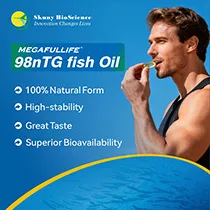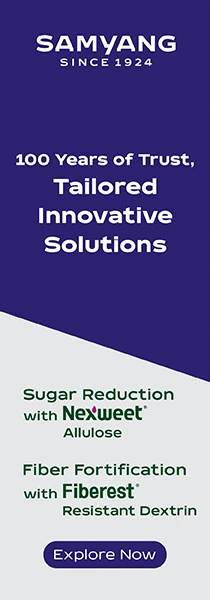Infant nutrition: How HMOs are transforming gut health and personalized formula

Human milk oligosaccharides (HMOs) are reshaping infant nutrition, offering gut health benefits and bridging the gap between breast milk and formula. With innovations like Novonesis’ MyOli 5 HMO Mix and dsm-firmenich’s seven HMO blends at commercial scale, Nutrition Insight learns how the companies are developing personalized versions of the compounds for advanced baby formulas.
According to Innova Market Insights data, there is a 12% CAGR between October 2019 to September 2024 for baby and toddler food launches with HMO ingredients. Europe is in the lead (42%) followed by Asia (25%) and US/Canada (12%).
In this period, growth in health claims opens the path for innovation in Bone Health (+24%), Energy/Alertness (+18%), Immune Health (+11%), Brain Health (11%) and Vitamin/Mineral Fortified (+10%).
Data from October 2023 to September 2024 also reveals that Immune Health claims drove HMO launch success (64%), followed by Brain Health (49%), and Digestive/Gut Health (38%). The top HMO ingredients tracked in the launches in this period include 2’FL(fucosyllactose) (80%), Lacto-N-Tetraose (41%), and 6 Sialyllactose (21%).
Effective nutrients
Jim Richards, PhD, senior director of Scientific Engagement at dsm-firmenich, details the company’s strategy to ensure the purity and efficacy of its HMOs.
“Our carefully designed industrial purification process, utilizing multiple advanced purification and isolation steps, ensures that our HMOs consistently meet the highest purity standards. We have implemented a thorough quality system from raw material selection to final product release, ensuring uniform and high quality for every batch.”
“In our R&D and QC laboratories, we have developed and implemented state-of-the-art analytical methods and techniques such as ultra-high-performance liquid chromatography with charged aerosol detector (UHPLC-CAD) and high-performance anion exchange chromatography with pulsed amperometry detection (HPAEC-PAD) to test product purity, perform contaminant screenings, and confirm product stability,” he adds.
HMO blends for infant nutrition
At Novonesis, its senior scientific advisor, Dr. Yannik Schönknecht, touts the company’s leading biosolutions, which include the production and research of HMOs. “We are among the first companies in the world to produce 2’-FL and a complex 5-HMO mixed structure — the MyOli 5 HMO Mix.”
 Novonesis’ MyOli 5 HMO Mix is a blend of the five most abundant HMOs found in human milk.“We are deeply committed to studying the health efficacy of HMOs through clinical and preclinical research. In 2021, we became the first company to publish a clinical study on infant formula with the MyOli 5 HMO Mix. Subsequently, three further clinical study publications were announced, all demonstrating and confirming the efficacy of the 5 HMO Mix.”
Novonesis’ MyOli 5 HMO Mix is a blend of the five most abundant HMOs found in human milk.“We are deeply committed to studying the health efficacy of HMOs through clinical and preclinical research. In 2021, we became the first company to publish a clinical study on infant formula with the MyOli 5 HMO Mix. Subsequently, three further clinical study publications were announced, all demonstrating and confirming the efficacy of the 5 HMO Mix.”
He adds that MyOli 5 HMO Mix’s benefits are supported by preclinical studies, saying it is the world’s most extensively studied HMO blend.
“Infant formula fortified with the 5 HMO Mix has been shown to improve gut health by shifting stool outcomes closer to those of breastfed infants. Additionally, it promotes a healthy microbiome composition — one rich in bifidobacteria and contains fewer undesired microbes,” says Schönknecht.
“We are committed to further researching and substantiating the efficacy of its biosolutions. One example of this is initiating a new clinical study aimed at gaining deeper insights into the long-term effects of HMOs on health.”
Personalized HMOs enter the space
Richards explains that dsm-firmenich products address the growing demand for personalized infant and maternal health nutrition by creating combinations of HMOs.
 Innova Market Insights data reveals that Immune Health claims drove HMO launch success (64%), followed by Brain Health (49%), and Digestive/Gut Health (38%).“dsm-firmenich firmly believes that breastfeeding is the gold standard for infant nutrition. However, it is a fact that some mothers cannot breastfeed or choose not to breastfeed exclusively. For these infants, infant formula is the only acceptable breast milk substitute. As such, infant formula is designed to replicate, as closely as possible, the composition and functionality of breast milk.”
Innova Market Insights data reveals that Immune Health claims drove HMO launch success (64%), followed by Brain Health (49%), and Digestive/Gut Health (38%).“dsm-firmenich firmly believes that breastfeeding is the gold standard for infant nutrition. However, it is a fact that some mothers cannot breastfeed or choose not to breastfeed exclusively. For these infants, infant formula is the only acceptable breast milk substitute. As such, infant formula is designed to replicate, as closely as possible, the composition and functionality of breast milk.”
“Today, the largest compositional difference between breast milk and infant formula is HMO. Over nearly 20 years of HMO R&D, dsm-firmenich has made possible the manufacture of seven HMOs at commercial scale (2’-FL, 3-FL, DFL, LNT, LNnT, 3’-SL, and 6’-SL). The portfolio of available HMOs that can be included in infant and follow-on formulas now can recapitulate nearly half of the overall average HMO content in human milk by weight.”
He says that the company has tested combinations of HMOs in infant formula in infant clinical trials, which were proven to be safe and bring positive health impacts, like shaping gut microbiota to match breastfed infants closely.
Richards notes that the HMO composition of human milk differs based on the mother’s genetics, and regional differences have been reported.
“By coupling the HMO portfolio with a scientific understanding of regional HMO breast milk composition, it can be possible to tailor regional or national infant and follow-on formula offerings with blends of HMOs designed to represent local human milk levels while still being consistent with the HMO blends that have been reported in preclinical and clinical studies to confer benefits to the infant.”
Evolving HMO composition
Schönknecht claims human milk might be the most personalized nutrition in the world since it differs per person and perfectly has all the nutrients and bioactives that infants need to be healthy.
However, for infants who cannot be breastfed, infant formulas are the “first and only dietary alternative,” to which HMOs can provide value and better the formulas’ composition, improving infant health outcomes.
“Novonesis’ MyOli 5 HMO Mix is a blend of the five most abundant HMOs found in human milk. The blend is designed to represent the human milk composition as closely as possible, regarding HMO abundance and ratios,” highlights Schönknecht.
“In clinical studies, the blend has shown positive outcomes, including better health, improved microbiome composition, and better bowel movements. Human milk serves as a model for infant nutrition, evolving in composition over time to offer the potential for personalization. HMOs undergo significant changes in abundance throughout lactation, which can be replicated in different stages of infant nutrition,” he says.
According to Schönknecht, the MyOli 5 HMO Mix captures the most noticeable shifts in HMO abundance throughout lactation, including the noteworthy 3-FL, which becomes increasingly common as lactation continues.
“We have developed a robust and scalable technology platform for the production of HMOs. This has enabled us to bring it to a large industrial scale in just a few years.”
 dsm-firmenich manufactures seven HMOs at commercial scale (2’-FL, 3-FL, DFL, LNT, LNnT, 3’-SL, and 6’-SL).Schönknecht adds that Novonesis ensures sustainability documentation of raw materials across the supply chain and, for instance, sourcing 100% certified green energy and biogas.
dsm-firmenich manufactures seven HMOs at commercial scale (2’-FL, 3-FL, DFL, LNT, LNnT, 3’-SL, and 6’-SL).Schönknecht adds that Novonesis ensures sustainability documentation of raw materials across the supply chain and, for instance, sourcing 100% certified green energy and biogas.
Scaling challenges and solutions
Scaling HMO production can be challenging, and Richards explains that dsm-firmenich especially struggled with fermentation in the upstream area. “At industrial scale, mixing times are markedly longer than at lab scale, creating gradients of nutrients such as sugars and oxygen.
“It is well-known that Escherichia coli, our production host, responds with significant physiological changes when exposed to such gradients, triggering overflow metabolism or mixed acid fermentation, which potentially has detrimental consequences for the culture. Success in overcoming these challenges was due to a combination of innovative strain engineering and smart process design, coupled with necessary equipment redesign.”
He continues: “Another important factor for this success was the availability of scale-down models, which enabled us to mimic the industrial scale situation in a laboratory environment and thereby study the effects of strain and process changes as early as possible. Overall, this was a fantastic collaborative effort between strain and process engineers.”
On sustainability, Richards adds that dsm-firmenich is obliged to have complete control of its supply chain and is required to have full traceability under FSSC 22000 and ISO 9001 certifications. “We run continuous improvement projects to make HMOs more efficient, including improving our environmental footprint.”












